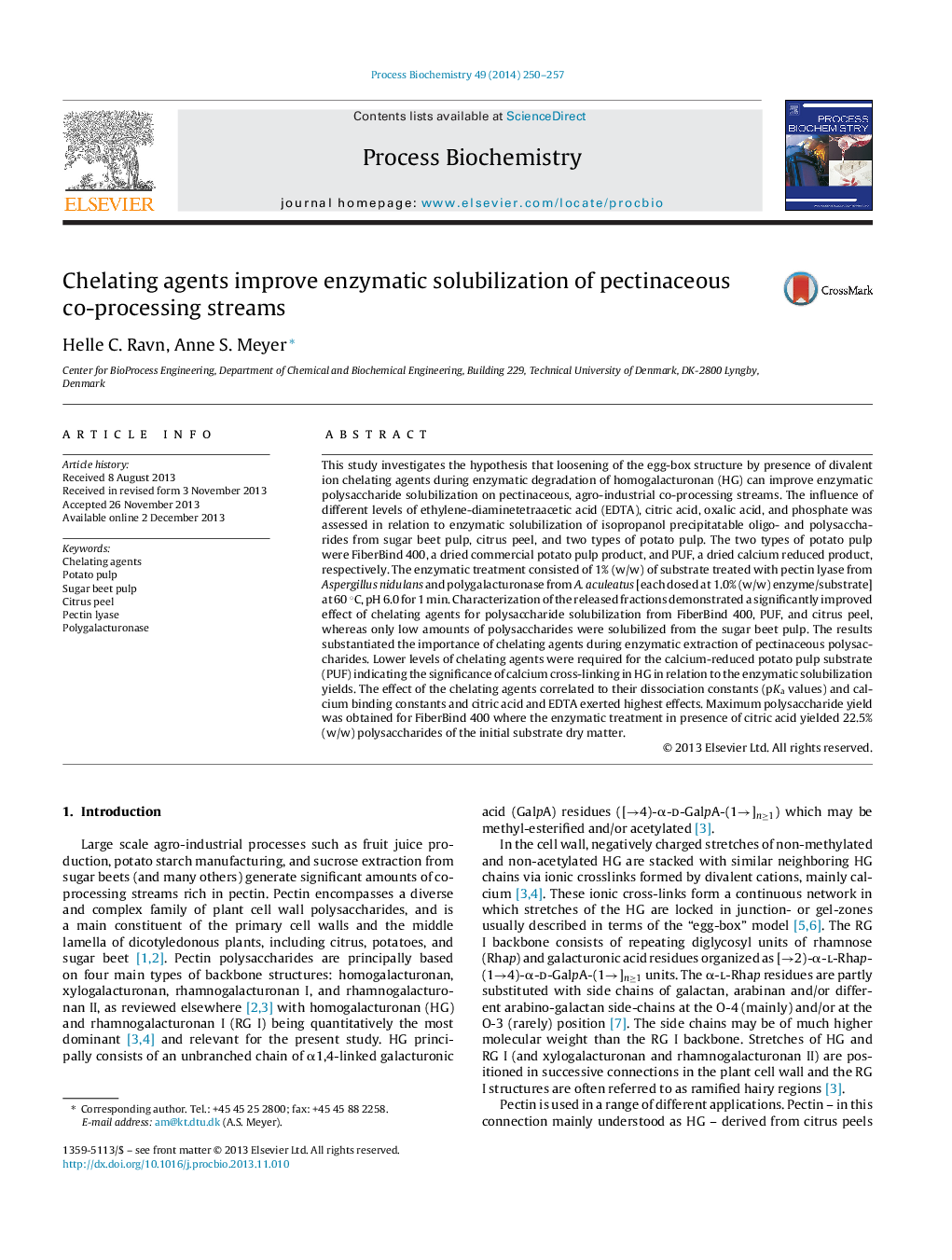| Article ID | Journal | Published Year | Pages | File Type |
|---|---|---|---|---|
| 34790 | Process Biochemistry | 2014 | 8 Pages |
•Chelator addition promoted increased pectinase catalyzed polysaccharide solubilization from pectinaceous biomass.•Chelator effects were in perfect agreement with their pKa and high calcium binding constants relative to galacturonic acid.•Potato pulp with reduced calcium content responded less to chelators and gave high enzymatic yields.•Chelating agents may assist the enzymatic release of pectinaceous structures by loosening the egg-box structures in homogalacturonan.
This study investigates the hypothesis that loosening of the egg-box structure by presence of divalent ion chelating agents during enzymatic degradation of homogalacturonan (HG) can improve enzymatic polysaccharide solubilization on pectinaceous, agro-industrial co-processing streams. The influence of different levels of ethylene-diaminetetraacetic acid (EDTA), citric acid, oxalic acid, and phosphate was assessed in relation to enzymatic solubilization of isopropanol precipitatable oligo- and polysaccharides from sugar beet pulp, citrus peel, and two types of potato pulp. The two types of potato pulp were FiberBind 400, a dried commercial potato pulp product, and PUF, a dried calcium reduced product, respectively. The enzymatic treatment consisted of 1% (w/w) of substrate treated with pectin lyase from Aspergillus nidulans and polygalacturonase from A. aculeatus [each dosed at 1.0% (w/w) enzyme/substrate] at 60 °C, pH 6.0 for 1 min. Characterization of the released fractions demonstrated a significantly improved effect of chelating agents for polysaccharide solubilization from FiberBind 400, PUF, and citrus peel, whereas only low amounts of polysaccharides were solubilized from the sugar beet pulp. The results substantiated the importance of chelating agents during enzymatic extraction of pectinaceous polysaccharides. Lower levels of chelating agents were required for the calcium-reduced potato pulp substrate (PUF) indicating the significance of calcium cross-linking in HG in relation to the enzymatic solubilization yields. The effect of the chelating agents correlated to their dissociation constants (pKa values) and calcium binding constants and citric acid and EDTA exerted highest effects. Maximum polysaccharide yield was obtained for FiberBind 400 where the enzymatic treatment in presence of citric acid yielded 22.5% (w/w) polysaccharides of the initial substrate dry matter.
